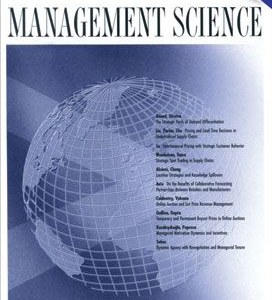
Bhaskarabhatla, A., Cabral, L., Hegde, D. and Peeters, T. (2021). Are inventors or firms the engines of innovation? Management Science, 67(6):3899--3920.
-
Affiliated authors
-
Publication year2021
-
JournalManagement Science
In this study, we empirically assess the contributions of inventors and firms for innovation using a 37-year panel of U.S. patenting activity. We estimate that inventors' human capital is 5-10 times more important than firm capabilities for explaining the variance in inventor output. We then examine matching between inventors and firms and find highly talented inventors are attracted to firms that (i) have weak firm-specific invention capabilities and (ii) employ other talented inventors. A theoretical model that incorporates worker preferences for inventive output rationalizes our empirical findings of negative assortative matching between inventors and firms and positive assortative matching among inventors.